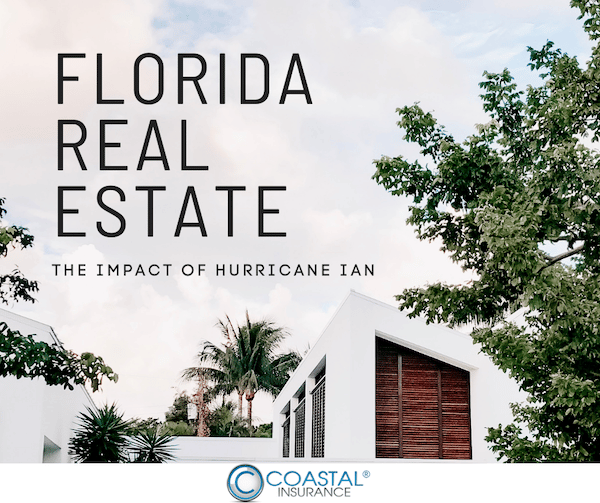 When you’re shopping for home insurance, you probably have many questions.
When you’re shopping for home insurance, you probably have many questions.
And it’s perfectly natural if one of those questions is: “How much home insurance do I need?”
After all, home insurance can be costly – especially here on Long Island.
You don’t want to pay for more home insurance than you need.
But you also want to make sure you’re covered in case your home is destroyed in a fire or storm.
Also, if someone is injured on your property, your home insurance should cover their medical bills, loss of income, and pain and suffering.
You don’t want to worry about having to pay for these costs, along with legal fees, out of pocket if you are sued.
How Much Home Insurance Do You Need? It Depends
Answering the question, “How much home insurance do I need?” depends on the size, style, and quality of construction of your home, as well as construction costs in your area.
When it comes to personal liability coverage, how much insurance you need depends on the value of your personal assets.
The goal is to have enough liability coverage to shield, or protect, your assets from the risk of a lawsuit. Most insurance companies will limit personal liability coverage to $500,000.
An umbrella policy can (and should) be placed over-and-above the personal liability limit of your home insurance policy if you have more than $500,000 in assets to protect.
Understand the Home Insurance Basics – Section I & Section II
Your home insurance coverage falls into two main sections.
Section I – Property Coverage:
- Your dwelling
- Other structures on your property
- Personal property within your home and on your property
- The loss of use of your home in the event of catastrophic damage
Section II – Liability Coverage:
- Personal Liability
- Medical Payments
Personal Liability protects you against a lawsuit if someone gets injured or dies on your property. It’s one of the most valuable parts of your home insurance policy because attorney fees will not reduce the limit.
For instance, the personal liability limit on your home insurance policy is $500,000, which is the maximum allowed by most insurance carriers. The courts decide that you are liable for the full $500,000, but it cost the insurance company $200,000 to defend you in court. The insurance company will pay out the $500,000 covered by your policy, plus all your attorney fees.
Section II, Part F of your policy covers medical payments up to a certain amount if someone gets hurt and it was not your fault.
But how much home insurance do you need to cover each area? Read on to learn our expert recommendations, and then see if your current home insurance policy meets these minimums.
If it doesn’t, you could find yourself in a tight spot if your home is damaged or someone is injured on your property.
How Much Section 1 Home Insurance Coverage Do You Need?
Most insurance agencies today will recommend that you insure your home for Full Replacement Value.
If your home is damaged beyond repair, as it may be in the case of a fire or a bad storm, you’ll need enough insurance coverage to re-engineer, demolish, and completely rebuild the home. In many cases, this can be more than the market value of a home.
That’s where the answer to the question: “How Much Home Insurance Do I Need” can vary widely.
Calculating the True Value of Your Home
The price of building a new home depends on a number of factors.
It will vary based on the cost of labor in your area. You’ll need to pay an architect to draw up the plans, the builder who completes the construction, and any contractors working on the site.
The cost of rebuilding your home also depends the price of building materials at the time in your region.
Other factors that affect your home’s replacement value include the home’s age, construction details, any distinct features of your house, and the price of permits and regulations in your city or municipality.
Building a new home costs more in certain regions, such as Long Island, and may also be affected by the area’s housing market and the local economy.
The factor that plays the greatest role in your construction costs per square foot is the quality of the materials. Homes that use “builder’s grade,” or the lowest quality of materials, may cost as little as $100 per square foot, while homes with better quality materials could range from $100 to $400 per square foot.
To understand how much your home may cost to rebuild, let’s explore the different quality of materials available.
Builder’s Grade Materials – Builder’s grade materials are the most basic of building materials. They might be used by an investor who wants to quickly flip a house in a low-income area. They might look nice when they are brand new, but they aren’t built to withstand the test of time.
Examples of builder’s grade material include plywood or fiber board kitchen cabinets, laminate countertops, and basic appliances in a white finish. Bathroom fixtures will also be white.
Flooring will be laminate. The home won’t include any distinctive details or styling.
Semi-Custom Materials – A semi-custom home balances affordability with better quality. Kitchen cabinets may be constructed from solid wood, with granite countertops and stainless appliances. Floors will feature upgraded materials, and you’ll have a few choices in designs and styles for features like doors and windows.
Custom Materials – As the name implies, a home that uses custom building materials is built to the homeowner’s specifications. The kitchen will include quartz countertops if that is the homeowner’s preference, solid wood flooring, and higher-end appliances of the homeowner’s choice.
Luxury Materials – Once you get to the upper level of homes for high-net worth individuals, the house is constructed of the highest quality.
Think: Sub-Zero or Wolf kitchen appliances, custom amenities such as a wine cellar, a home theater, or a game room, and even integrated smart home technology systems.
The home may feature custom-designed storage. Every element is carefully considered by the homeowner, architect, and builder before it goes into the blueprints.
Custom and luxury grade homes can cost as much as $2,000+ per-square-foot to build.
Your home insurance should cover the cost to pay for rebuilding your home with the same quality of materials it had in the first place.
You can use our home value estimator to calculate approximately how much it would cost to rebuild your home.
Make sure your policy also covers the building costs of any structures on your property, such as sheds or detached garages.
These structures represent Part B of your home insurance policy, also known as “other structures.”
Guard Against Rising Home Construction Costs

A natural disaster such as a hurricane could also temporarily drive up building costs. Many people rebuilding or repairing their homes in a specific region can cause shortages in building materials and drive up construction costs based on supply and demand. The more people need a specific product or service, the more it will cost.
Adding an inflation guard endorsement to your home insurance policy can help make sure you’re covered to rebuild your home even if the price of labor and materials rise with the cost-of-living.
It’s important to note that estimating the replacement value of a home is not an exact science. The home cost estimator is just what it sounds like—an estimator, not an “exactimator”.
But a reputable insurance agency will help guide you to the right amount of insurance coverage you need to replace your dwelling after a catastrophic event.
Paying for a Place to Live If Your Home Is Destroyed
If your home is destroyed, you’ll need somewhere to live while your new home is being built.
Part D of your home insurance policy covers “Loss of Use.”
The policy limit on this portion of your insurance should be enough for you to pay for temporary housing.
Sometimes, a family will live in a mobile home on their property while their house is being built. Other times, they may rent an apartment or a single-family home with a short-term or month-by-month lease.
The amount of coverage you need depends on housing prices in your area. Your agent can help make sure you have enough coverage.
Insuring Your Personal Property

But the items inside your home will also need to be replaced.
Typical policies have coverage limits – the amount the insurance company will pay out – on personal property that is about half the value of your dwelling.
If your home is insured for $500,000, your personal property liability limit will be $250,000.
However, high-value items like fine jewelry, fine art, collectibles, and expensive electronics may not be covered.
Ask your insurance agent about additional endorsements for big-ticket items.
Artwork and jewelry may need appraisals before they can be insured.
It pays to get a home inventory list in order to estimate the value of your personal property so you can insure your household goods and personal items for the right amount.
Having a home inventory list on-hand will also make it easier if you have to file a claim. After a catastrophic loss, it may be hard to recall exactly what you owned.
Understanding Your Deductible
Insuring your home for full replacement value with an inflation guard endorsement could result in a higher premium.
If you are looking to save money on your home insurance, consider increasing your insurance deductible. You can increase your insurance deductible to $1,000, $2,500, or $5,000 to reduce your premiums.
You want to avoid making an insurance claim for less costly damage.
Ideally, you want to save your insurance claims for a catastrophic loss, such as a fire or pipe bursting that causes major damage to your home and your belongings.
How frequently you make claims is an important factor in how insurance rates are calculated. If you make too many claims in a short time span, your premiums could go up. Or your insurance provider could even drop you.
Raising your deductible and simply paying cash for less expensive damage can help keep your rates low and keep your credit-based insurance (CBI) score high. Your CBI score is another factor that helps determine your home insurance rates.
Section II Coverage: How Much Insurance Coverage Do You Need?
The second portion of your home insurance policy covers personal liability and medical costs.
This coverage protects you if someone is hurt on your property and brings a lawsuit against you.
If your insurance doesn’t pay out enough to cover the financial loss, you could face a costly and stressful situation.
Let’s look at the limits for Section II coverage to help determine how much most homeowners need.
Protect Your Assets with Personal Liability Coverage
Most insurance policies have a liability limit of $100,000 as the standard coverage if someone is injured or killed on your property.
It pays to increase this coverage to $300,000 or $500,000 in order to protect yourself from having to pay out-of-pocket if someone is hurt on your property and sues you.
If you don’t have enough Section II coverage and someone is hurt on your property, you could lose your savings, home, or other personal assets if you lose the lawsuit.
Additionally, personal liability coverage also pays your attorney fees without reducing your policy limits. In other words, if someone sues you for $500,000 and wins, and you have $500,000 in liability coverage, your insurance company will pay the $500,000 plus your attorney fees.
Increasing Your Personal Liability Coverage with An Umbrella Policy

An umbrella policy protects your assets with typical coverage limits incrementally increasing by $1 million. For instance you can get policies of, $1 million, $2, million, $3 million, $4 million or $5 million. For high-net-worth individuals, umbrella limits (sometimes referred to as “excess liability”) can be as high as $100 million.
If someone tries to sue you, your umbrella insurance will pay out over-and-above your home insurance policy, so the risk of losing your home, business, and other assets is reduced.
Because umbrella policies are fairly affordable, it’s worth considering if your home and total assets exceed the personal liability limits on your home insurance policy.
Should You Increase Your Medical Payment Coverage?
Part F of Section II coverage is designed to help pay the medical costs if someone is injured in your home and it was not your fault.
You weren’t negligent in any way.
But accidents happen.
If the person already has health insurance, their health care coverage should pay the bulk of the costs.
But your home insurance policy should cover up to $1,000 of their medical costs.
You can increase this limit to $3,000 or $5,000 if you want.
Increasing Part F coverage can help you avoid a lawsuit if someone is hurt on your property.
Even if the injury wasn’t your fault, they can try to sue you to pay for their medical costs.
And even if you win, a lawsuit is stressful and expensive.
Having extended coverage for medical payments could save you stress and money, especially if you often have friends who are uninsured or under-insured visiting your home.
Putting It All Together: How Much Home Insurance Do You Need?
If you aren’t sure how much home insurance you need, ask your Coastal Insurance representative to review your current policy. You can also check out our Home Insurance Estimator to determine approximately how much home insurance you need to cover your dwelling in case of a catastrophic loss.
*As always, read your insurance policy and check with your agent to see which coverage options YOU have. This article is written as a brief guide on how SOME insurance policies are written. Not all policies are the same. Check with your insurance agent, attorney, or financial or legal advisor before making any assumptions about your home insurance coverage or making changes to your home insurance policy.



![IBA Top Retail Brokers 2024 Medal[88] IBA's Top Retail Broker 2023](https://coastalinsurancesolution.com/wp-content/uploads/2024/07/IBA-Top-Retail-Brokers-2024-Medal88.png)



